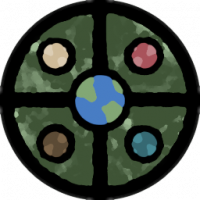Viewports in Campaign Cartographer
After typing out a bit I realize this might be more of a "feature request", unless CC3 has this ability and I passed over it.
I would define a "viewport" as a boxed area which displays another section of the sheet, but at a different scale, or a different rotation.
This means you could work in full scale on one section of the sheet, and if that layout was maybe at 1/4 scale, or 8x scale for a blowup box, on your final output it would automatically do it within this box which has an active "view" on the defined viewport target.
It would be especially cool if the viewport could refer to other CC3+ projects, which could assist city maps where people want to take the "roof" off and see inside their building - though I could understand that maybe it renders that "image" once and isn't constantly up-to-date without explicitly updating the view. (resource wise)



Comments
You can use an action entity (Tools>>Hyperlinks) to link to an external file. The action entity can also execute a macro to do something like the viewport action you describe using the ZWIN command (ZWIN 0,0 100,100 will zoom the view to the box specified).
You can also open more than one window in CC3+, and these can have different zooms. They don't offer different rotations, and they will have the same set of sheets visible, you you can't hide a sheet in just one of the windows.
You find this under View -> Windows
(sorry, I posted this without seeing Monsen's response - that might be closer to what I'm trying to do below?)
This will open the external file and zoom to the specified level if I understand correctly?
Right now what I would probably do to achieve what I want is to work out a building, render it, and paste that image into my city map where the building is. If I make changes to the inside of the building, I'd re-render and paste it again. Single flat images seem less resource intensive than modeling the building in the city layout to me.
A viewport in the way I mean it, is like the below image, except if you were to go and tweak Japan on the world map the "blowup" image would also have those changes.
You could copy the world map Japan, Paste it, and use the scale tool instead and that works, but having all that happen automatically without duplicating all those objects within the application would be pretty nice.
An action entity lets you execute some script operations when the user clicks on it. You can load a file, zoom to a different part of the map, hide sheets, and so on. A common use of action entities is having multiple levels of a building or starship, with each level in a different map file and buttons on each file linking to other files. You can also launch a new instance of CC3 that shows a different map file, making it a trivial matter to get back to the original map and location view by simply closing the newly-opened file.
In general, good mapping is about abstraction. Each map has a reason to show the amount of detail that it does. If you add too much detail to a single map in the hopes of being able to zoom in farther and farther, you're probably going to be disappointed. In your example of a world map, the world-level map has different coastline data than the inset map (it may have originated from the same data set, but the overview map is a simplified version of the detailed one).
What CC3 doesn't have is a way to show another map file at the same time on top of the current one in the same window. Using multiple view windows or opening multiple drawings at once might seem like a good solution, but there are some unexpected limitations in how they work that might be surprising.
Could an action entity load a file, save it as a png, and then import the png file to a specific location on a specific sheet?
What happens for the action entity (or hyperlink or hotspot as it's called in various places) is that it executes one or more macro command(s) as part of its operation. I believe that loading a file terminates the current macro in operation, however, so you can't do anything after the new file loads.
One thing to note is that CC3 keeps its images in an external file. If you update an image on disk, you don't need to do anything with the current drawing to get the new image to display (you might need to clear the image cache and redraw, but you wouldn't need to insert anything new into the drawing if you already had something there in the first place).